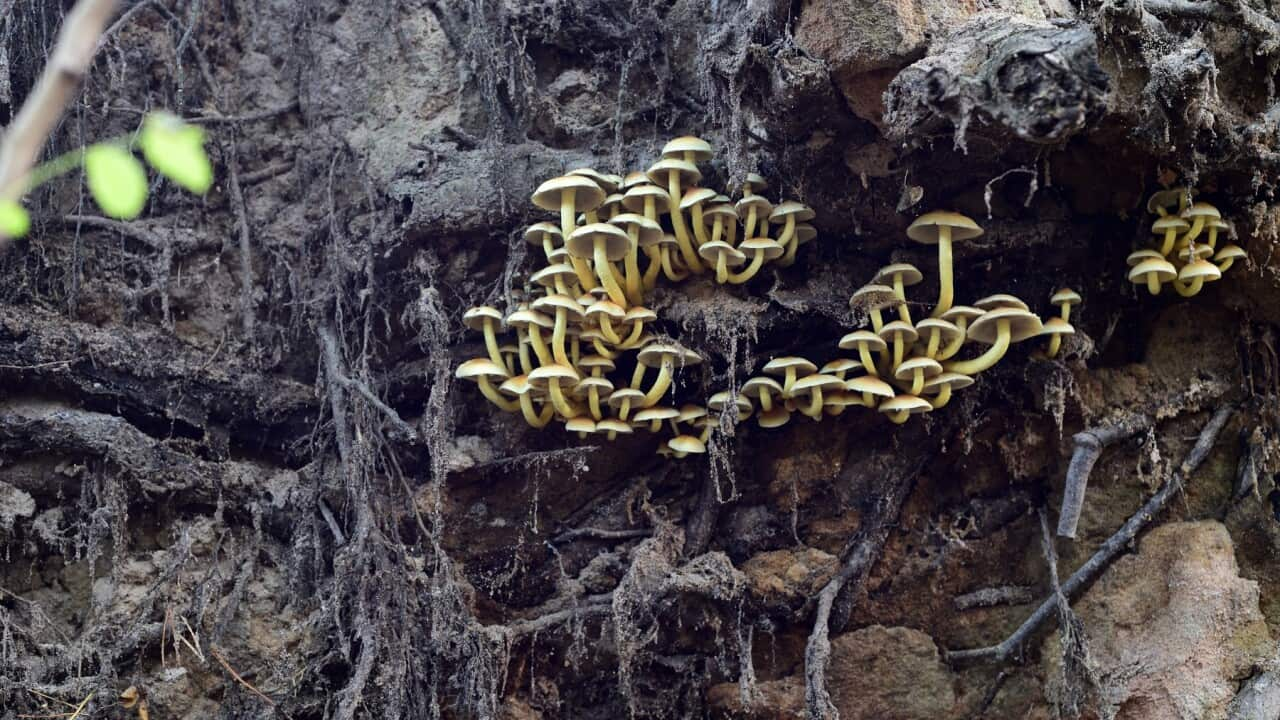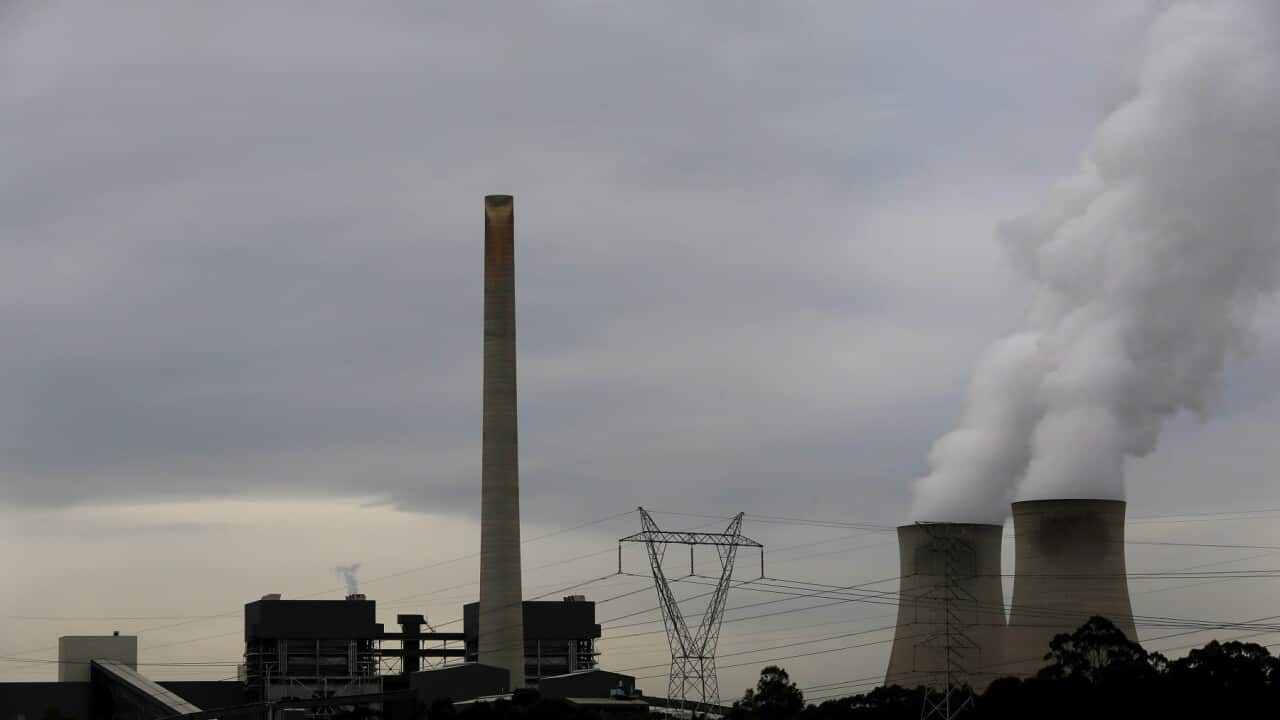TRANSCRIPT
From above, third-generation farmer Clint Neville's canola fields look like they would during any given growing season: sprawling acres of green and gold.
But below ground, something unusual is taking place.
"Normally when I sow it I only get one little sort of tap root but I'm getting all these fine little root systems and I think that's the fungi."
When Mr Neville first planted the canola at his 1900-hectare farm near Forbes, in central west New South Wales, seven months ago, he coated the seeds in a powder-like ingredient containing live fungi.
[["This little bag here does about 30 hectares. It's just a seed treatment that goes down with the seed at sowing time, and doesn't take much at all."]]
It's a minor change to farming operations, but one that could have benefits both for the agriculture industry and the planet.
It all started in the nearby town of Orange, where scientists at Australian start-up Loam Bio have been studying thousands of species of fungi.
They believe these tiny organisms could play a big role in the fight against climate change.
Tegan Nock is the company's co-founder.
"As we know, there's too much carbon in our atmosphere, but some people don't realise that there's actually not enough carbon within our agricultural soils. We focus on technology that lets us pull carbon out of the atmosphere, where it's a problem, and put it into our soils, where it's a solution."
Enter the fungi.
While much remains a mystery about the vast network beneath our feet, what is known is that the organisms store large amounts of carbon underground.
The team at Loam Bio is seeking to harness this superpower.
Plants draw vast amount of carbon dioxide from the air through photosynthesis, but most of it is released back into the atmosphere.
Biologist and Chief Product Officer at Loam Bio, Robbie Oppenheimer, says the seed treatment - made from fungal spores that attach to the plant - is designed to be used by crop farmers to keep the carbon underground.
"As the plant grows it establishes a symbiosis with the fungi and carbon gets pulled down through the plant into the soil and stabilised in the soil by the fungi."
Tegan Nock says potential benefits are twofold: less carbon in the atmosphere and healthier and more resilient crops.
"We're really excited about the impact that a product like this can have, both from a climate perspective, but also just from a food systems perspective. We're really eager to be able to see it scaled right across agricultural landscapes. We're working really heavily in Australia at the moment commercialising, but we've got research and trial programs in the US and Brazil as well."
Known as the fifth kingdom of life, there are millions of species of fungi and they're everywhere.
They live underneath grasslands, forests, roads, gardens, and houses on every continent on Earth.
"Fungi are their own kingdom of life. So while you have animals, you have plants - you also have fungi. And we know relatively little about fungi in comparison to other kingdoms of life."
That's Katie Field, a Professor of Plant-Soil Processes at the United Kingdom's University of Sheffield.
Professor Field was involved in research, published in 2023, into just how much carbon the Earth's underground fungi is storing.
The international team of scientists found an estimated 13 gigatonnes (one gigatonne is a billion tonnes) of carbon is transferred from plants to the global fungi network annually - that's roughly equivalent to a third of global fossil fuel emissions.
"It's massive. I mean, the number is hard to comprehend just how big that is. And this is just happening below our feet every day, unknown, silently."
Professor Katie Field says while we know fungi can store large amounts of carbon, more research is needed.
"When we talk about fungi holding onto carbon and using those big numbers, we have to remember that that is at a given point in time. So we don't know the fate of that carbon and how long it lasts within the soil. We know some of it sticks around, but we don't really know how much or for how long."
Loam Bio's fungi treatment has so far been scattered across 100,000 acres of farmland in Australia and that figure is expected to increase to 250,000 by the end of 2025.
Agricultural scientist Warwick Badgery says while fungi is a "valid mechanism for building carbon," it's too soon to say if technology works, and more evidence is needed.
"You need long periods of data to have confidence that sequestration will occur and be able to be maintained in a system long-term."
He says measuring carbon stocks in soils is challenging due to variability, including from weather events like droughts and floods.
Farmer Clint Neville has signed a 25-year contract with the company and has only completed his first year.
In February, a team from Loam Bio will measure the carbon in his soil, and compare it to the levels taken before the treatment was added.
And while it's still early days, he's optimistic.
"The concept of being able to draw carbon out of the atmosphere, take it down through the plant and lock in the soil and hopefully build genuine soil carbon is an exciting process."
The team at Loam Bio acknowledge the technology is not a simple solution to the climate crisis but rather, one way to buy time.
"It's not the answer to climate change. It's really important that it's not this or that type of scenario, but what we do have to do is have all solutions working together at the same time to have major climate impact."













